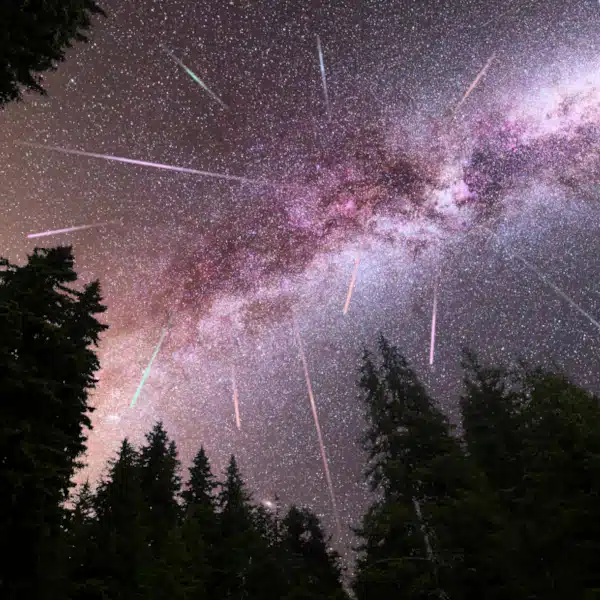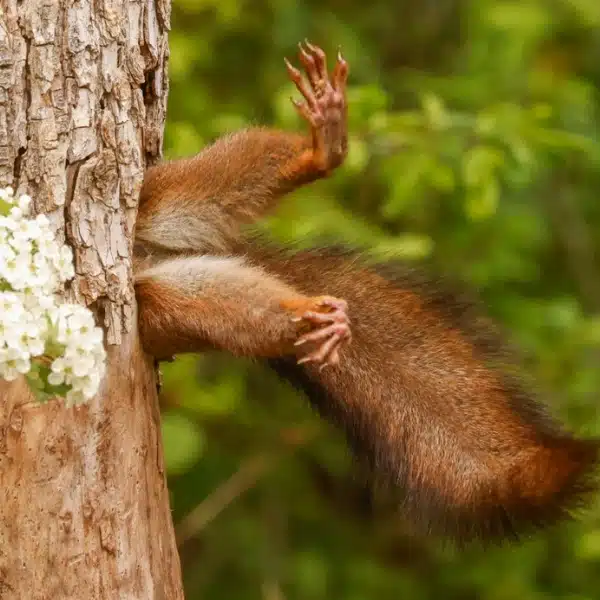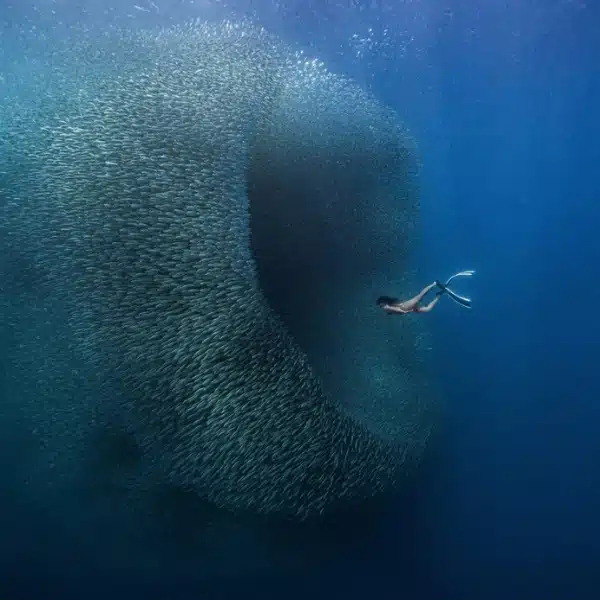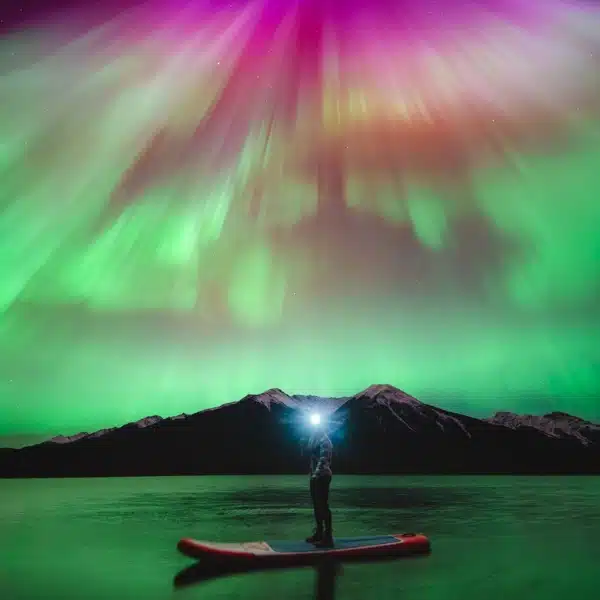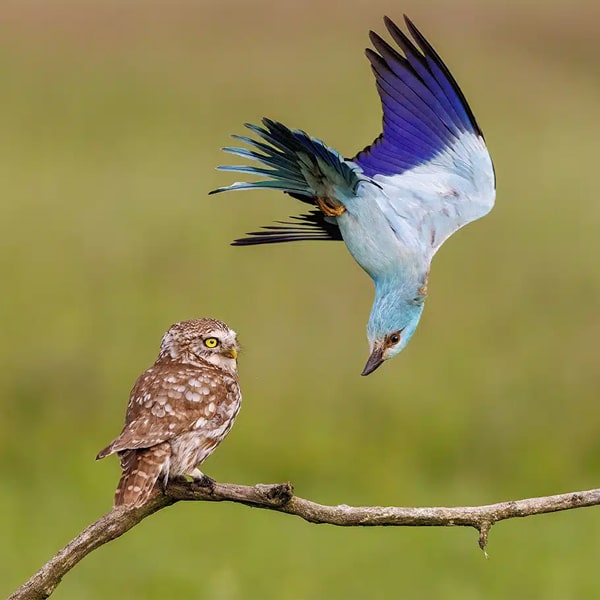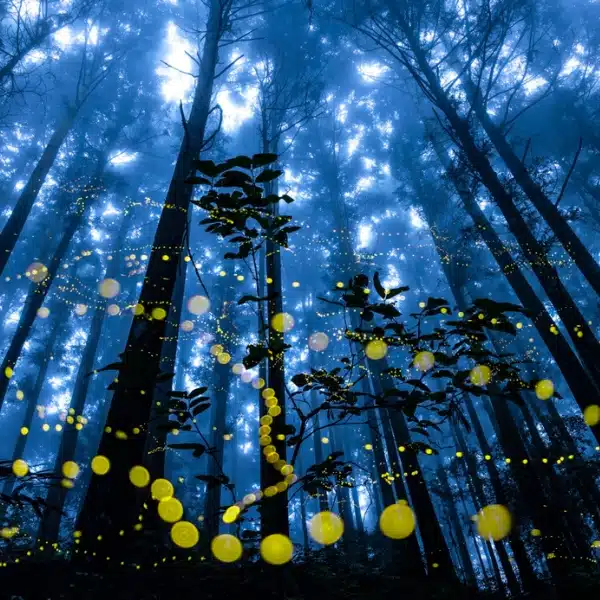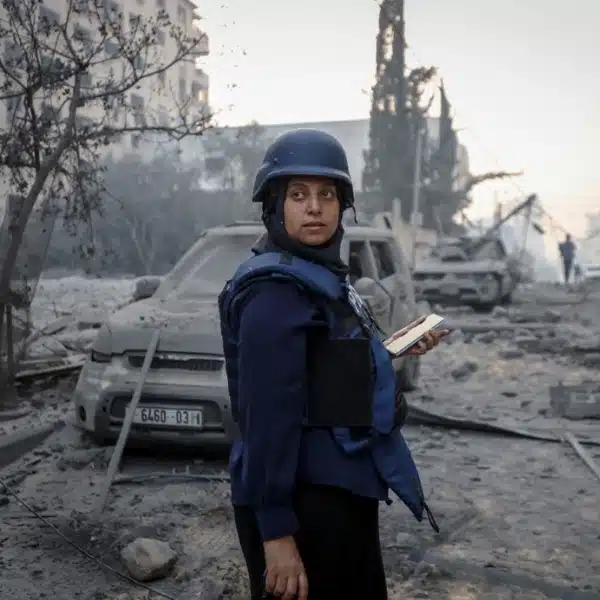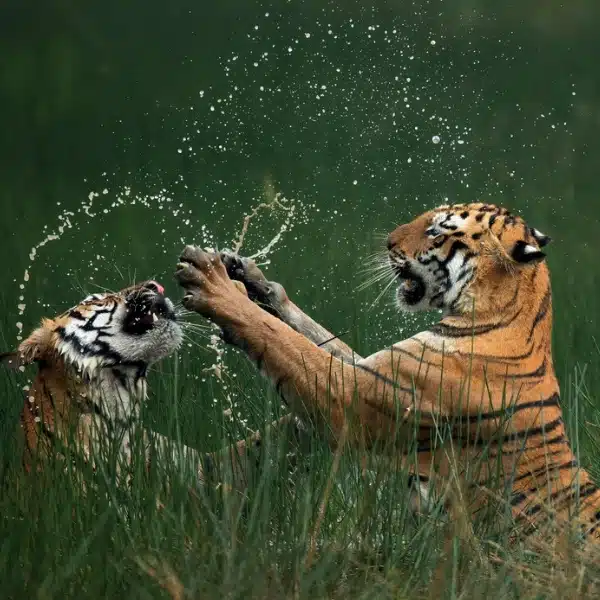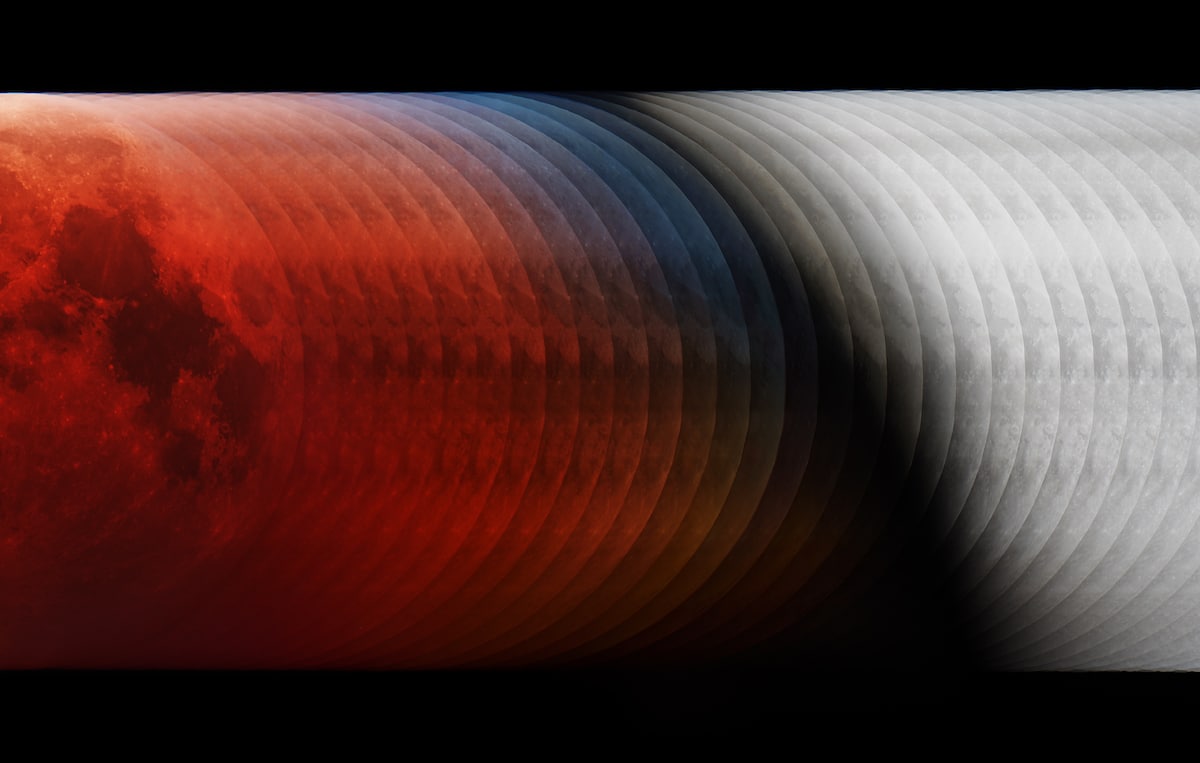
“Into the Shadow” by László Francsics (Hungary). Astronomy Photographer of the Year and Our Moon, Winner.
This image showcases the 35 phases of the total lunar eclipse on 21 January in one photograph. The phases were so close together that they blended perfectly in a continuous image that captured the shadow of the Earth. On the edge of the shadow appears a rare blue tint, the shadow of the Earth's ozone layer. The sequences were taken with 3-minute gaps using a pre-programmed shutter remote. They were stacked onto each other using the faint background stars as a guide, so that the photographer could reveal the real orbit of the Moon.
Budapest, Hungary, 21 January 2019
250 mm Newtonian reflecting telescope at f/4, Sky-Watcher EQ6 Pro mount, Sony Alpha 99 camera, HDR composite of multiple exposures.
Hungarian photographer László Francsics was named Astronomy Photographer of the Year for his innovative look at a lunar eclipse. By artistically stacking photos, Francsics displays 35 phases of the total eclipse, which moves from red to black to white. Given that 2019 is the 50th anniversary of the moon landing, the image is an apt winner of the Insight Investment Astronomy Photographer of the Year contest.
Now in its eleventh year, the highly competitive contest highlights the best astrophotography from around the world. The 2019 competition received over 4,600 entries—a record—from 90 different countries. This makes Francsics' accomplishment all the more special, as he was able to triumph over technically sound and artistically pleasing compositions from the world's best astrophotographers. For his efforts, he will receive a cash prize of £10,000, as well as a central place in the exhibition of winning photographs now on show at the National Maritime Museum.
“For a single multiple-exposure image to capture this event with such positional precision, creative innovation and beauty is nothing short of masterful,” shares competition judge Ed Robinson. “The colors of our atmosphere projected onto the Moon’s disc during the eclipse are not only artistically pleasing but also offer an understanding of such events that can reveal aspects of our own, thin, yet essential part of our atmosphere.”
Other winning images include a crystal-clear view of a galaxy located 90 million light-years from Earth and a scenic panorama of the aurora borealis from a mountain in Lofoten, Norway. These otherworldly images are balanced by touches of humanity, including a moving image of photographer Ben Bush and his beloved dog Floyd. Surrounded by Mars, Saturn, and a faint glimpse of the Milky Way, we see Bush and his faithful companion in silhouette. Their portrait is a celebration of the photographer's two passions—the cosmos and animals.
The winners and shortlisted entries are on display at the National Maritime Museum until April 26, 2020. They'll also be published in the competition's official book, which is available for purchase online. And the competition isn't over just yet. There's still time to vote for the People's Choice Award 2019 from a selection of 24 photos.
Here are the astrophotography winners from the 2019 Insight Investment Astronomy Photographer of the Year contest.
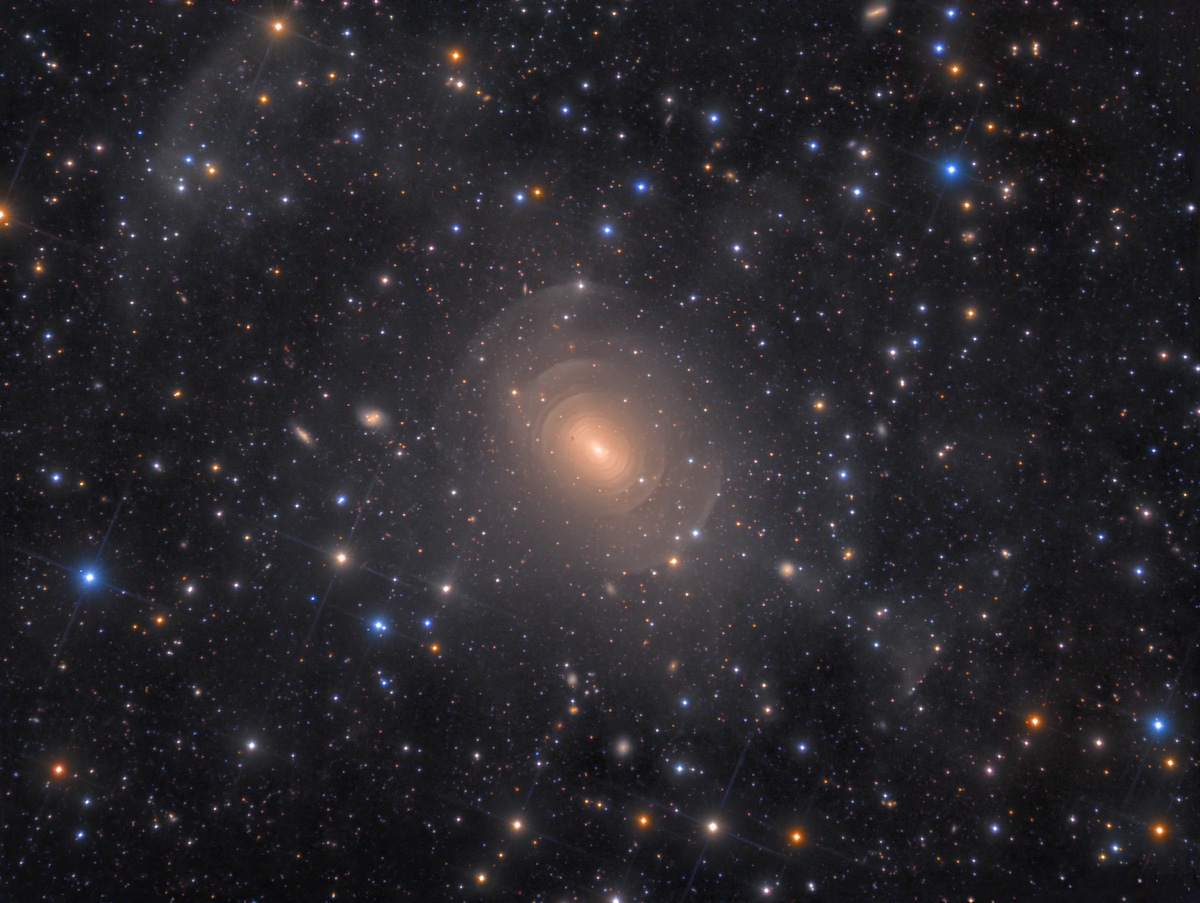
“Shells of Elliptical Galaxy NGC 3923 in Hydra” by Rolf Wahl Olsen (Denmark). Galaxies, Winner.
This is a deep image of the peculiar, elliptical galaxy NGC 3923. The galaxy features myriad concentric shells as a result of past mergers with other nearby galaxies. Recent research has documented 42 concentric shells in NGC 3923, more than in any other known galaxy. A prominent stream of stars extends towards the lower right, terminating abruptly in a shell-like fragment. Within the stream lies a small round galaxy believed to be one of the progenitors of the shell system. Now in the process of falling back towards the center of NGC 3923, it shows a comet-like tail of stars extending behind it. Scattered throughout the field of view, far in the distant background, are numerous other galaxies. Some are even visible through the diffuse glow of NGC 3923. Many lie several billion light-years away.
Auckland, New Zealand, 21 May 2017–25 March 2018
Homebuilt 12.5” Serrurier Truss Newtonian telescope at f/4, Losmandy G-11 mount, QSI 683wsg-8 camera, L-RGB composite, 41 hours 38 minutes total exposure.
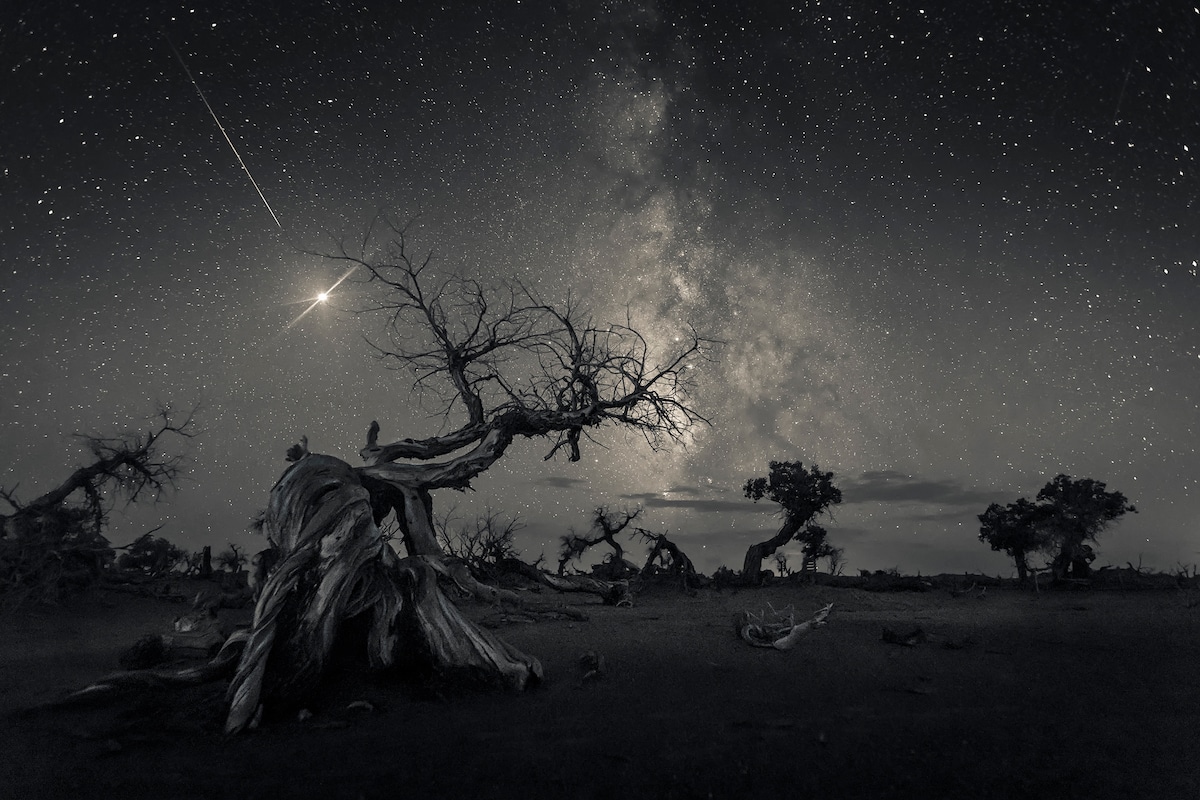
“Across the Sky of History” by Wang Zheng (China). Skyscapes, Winner.
This mystical image of withered poplar trees was taken in the Mongolian region of Ejina, in the historical Kingdom of Xi Xia. The poplars’ resistance to erosion has led to an extraordinary formation of a desolate landscape and as a meteor falls, their shapes look like ancient creatures on an uninhabited desert.
Ejina, Inner Mongolia, China, 12 August 2018
Canon EOS 5D Mark IV camera, 20 mm f/2 lens, ISO 6400, 10-second exposure.
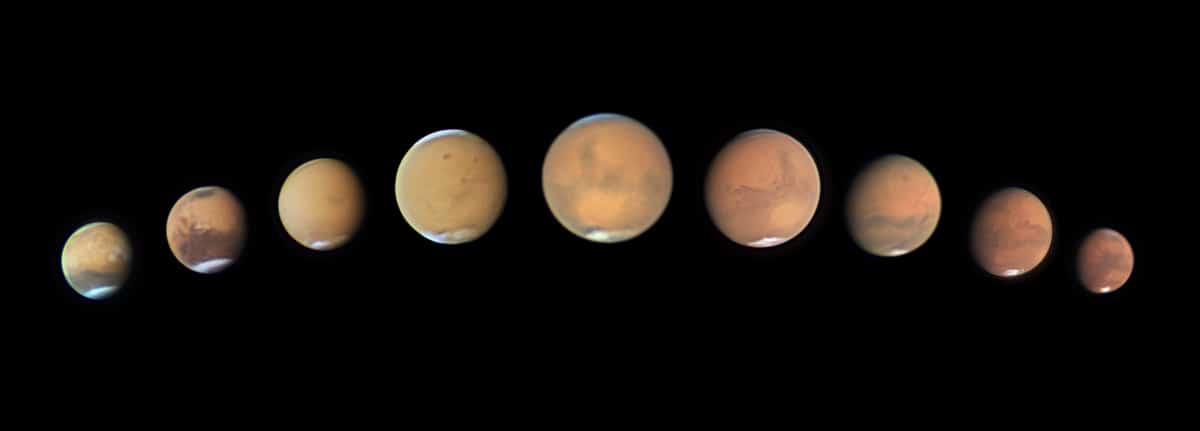
“Death of Opportunity” by Andy Casely (Australia). Planets, Comets, Asteroids, Winner.
This is a sequence of images through the perihelic opposition of Mars in 2018 that follows the progress of the great global dust storm, which proved to be detrimental for the Opportunity Mars rover, which exceeded its planned lifespan by 14 years. The first frame (26 May) precedes the storm, with clouds on volcanoes in the Martian spring. The storm rapidly grew from regional to global coverage between 6 and 11 June (second and third frames), obscuring Opportunity, and only the Tharsis volcanoes were peeking out by 3 July. After a close July opposition, with features such as Syrtis Major only dimly visible through the dust, the usual darker albedo features returned as Mars disappeared into the distance again, while the south polar cap shrank into Martian summer.
Sydney, Australia, 26 May–30 October 2018
Celestron C14 355 mm Schmidt-Cassegrain reflecting telescope at f/26, Astronomik RGB filters, Celestron CGX-L mount, ZWO ASI290MM camera, mosaic of multiple stacked exposures.
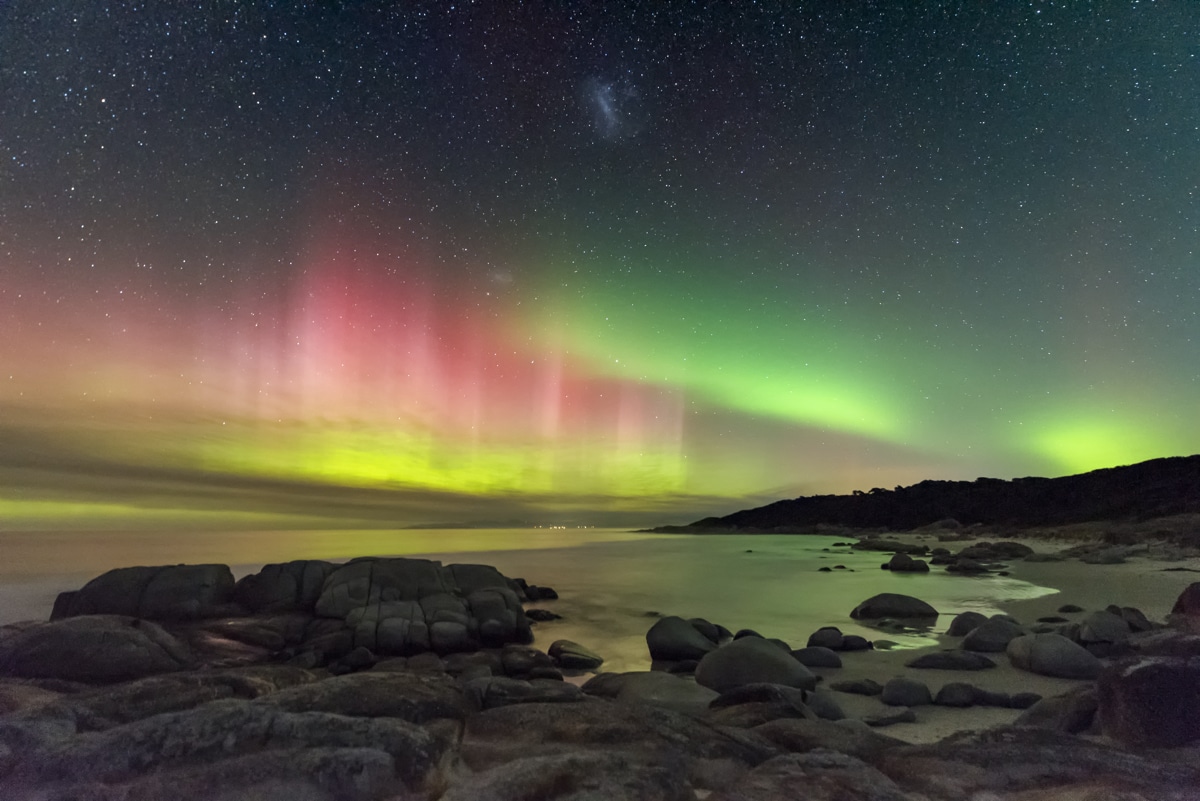
“Aurora Australis from Beerbarrel Beach” by James Stone (Australia). Aurorae, Runner-up.
A brightly colored display of the Southern Lights beams high into the night sky on the east coast of Tasmania. The Large Magellanic Cloud also appears at the top center of the image. Deserted beaches and minimal light pollution make Tasmania an ideal place to photograph the night sky, even more so when the aurora comes out to play.
St Helens, Tasmania, Australia, 20 April 2018
Nikon D750 camera, 15 mm f/3.2 lens, ISO 6400, 10-second exposure.
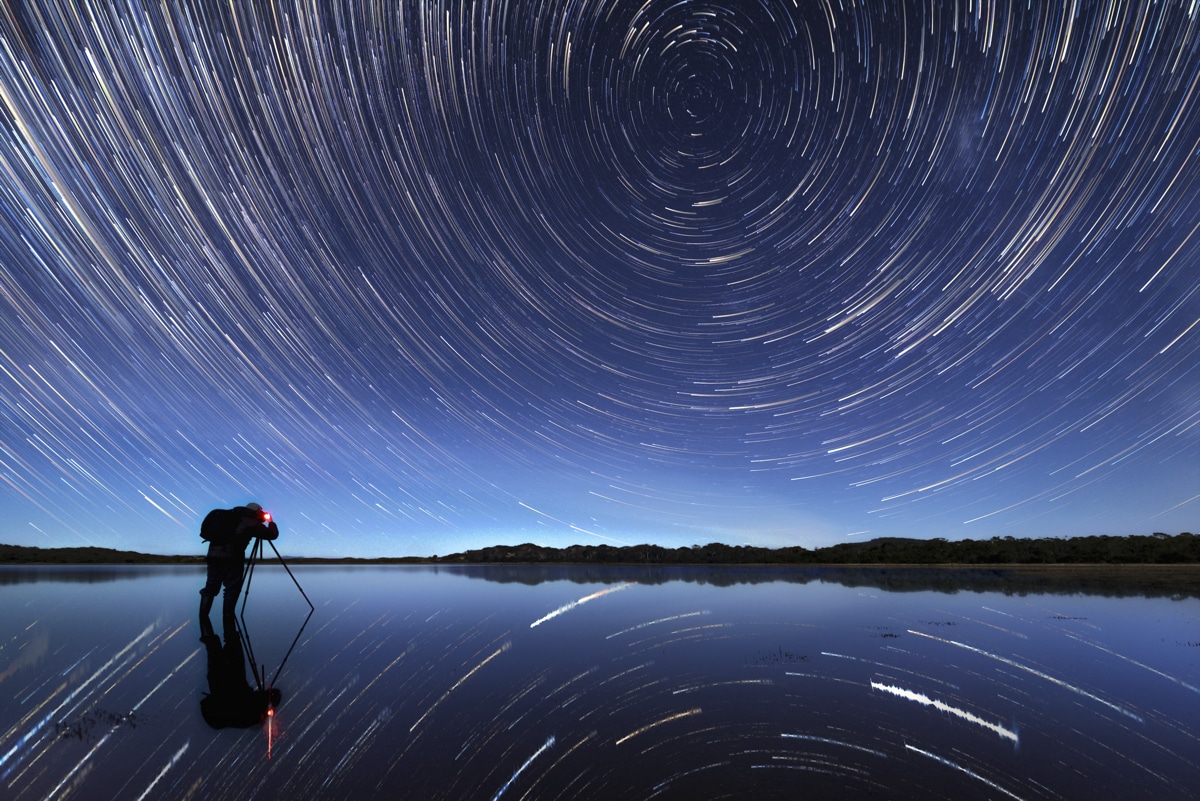
“Cosmic Plughole” by James Stone (Australia). People and Space, Highly Commended.
This image is a stacked star trail, combined to show an hour and a quarter of the Earth's rotation through space and time. A hint of moonlight gives the sky a beautiful blue hue, and with the stars reflected in the still, shallow water of this ethereal salt marsh, the photographer felt like he had to hang on to the tripod to prevent being sucked into a cosmic plughole.
South Arm, Tasmania, Australia, 19 June 2018
Nikon D750 camera, 15 mm f/3.5 lens, ISO 2000, 250 x 15-second exposures.
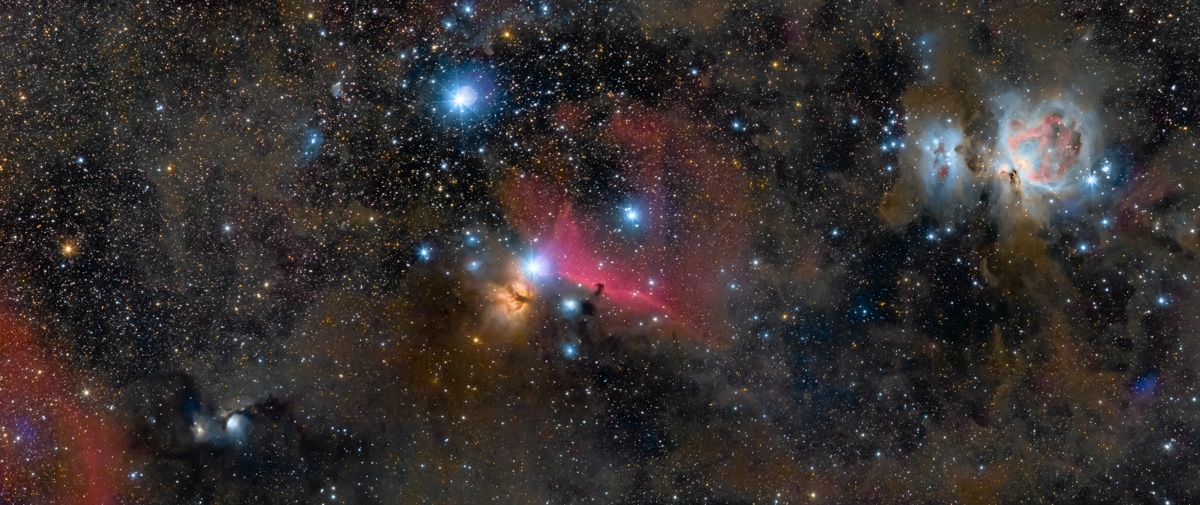
“The Jewels of Orion” by Ross Clark (UK). Best Newcomer, Joint Winner.
This is an image that the photographer wanted to capture since starting astrophotography in September 2018. This strip of the Orion constellation includes some of the best targets in the Northern Hemisphere. According to the photographer, the image shows what can be done with a pretty average DSLR camera and a lens and is hopefully an inspiration to those who have some photography kit already and want to get started. The image is a mosaic of two panes at 200 mm. Both panes were stacked in PixInsight, and have the same basic early processing of gradient removal and color calibration. Both images were then transferred and stitched together in Photoshop with further work done to reduce noise, bring out the dust and control the stars’ size and color.
Embleton, Northumberland, UK, 30 January 2019
Canon 450D astro-modified camera, Sky-Watcher Star Adventurer mount, Canon EF 70-200 mm f/2.8L USM lens at 200 mm f/3.5, ISO 800, two-panel mosaic, 3-hour total exposure.
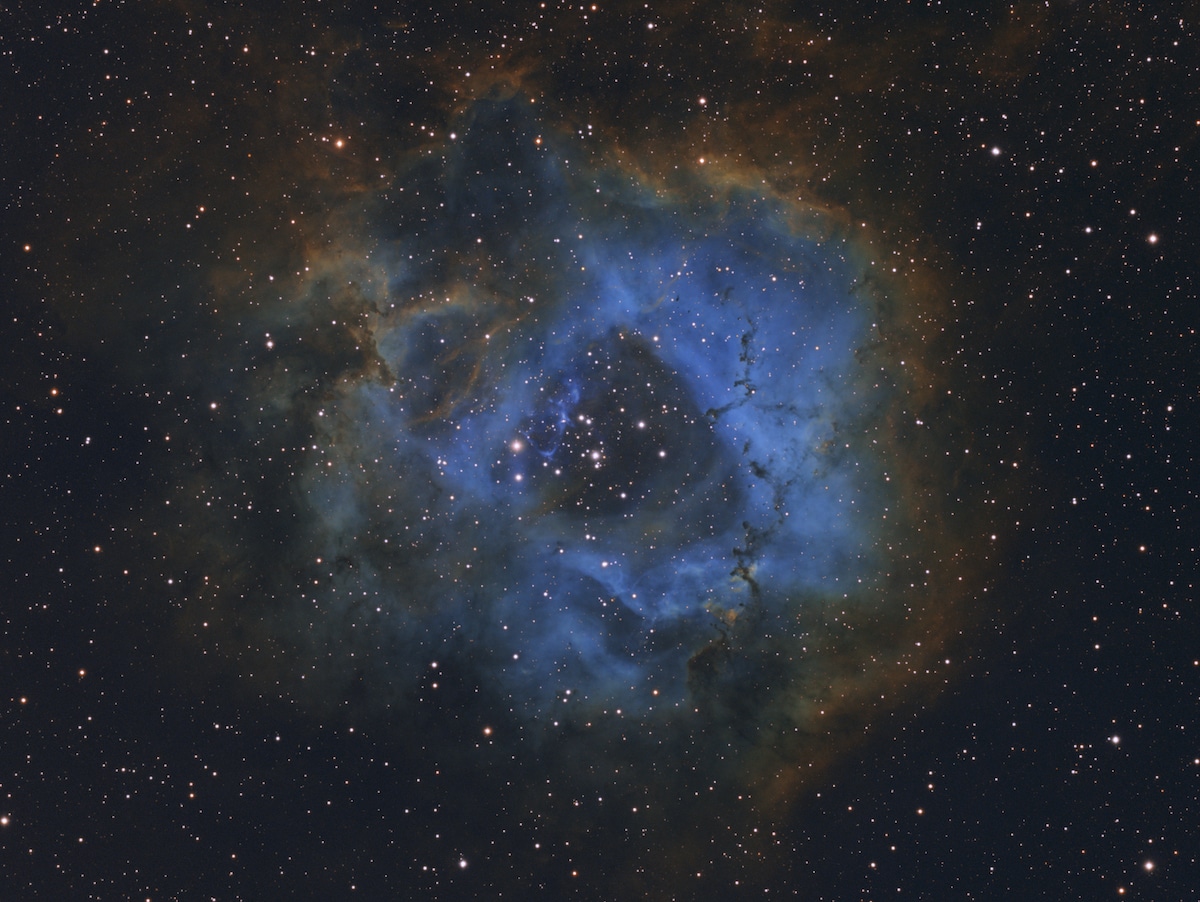
“Stellar Flower” by Davy van der Hoeven (Netherlands), aged 11. Young Astronomy Photographer of the Year, Winner.
Once the photographer decided to capture a deep sky image, he started researching online for nebulae and came across the magnificent Rosette Nebula. With the help of his father, he built the equipment and together, over three nights in November, captured images of the Rosette Nebula using different filters. In order to familiarize with processing images, the young photographer practiced on one of his father’s older photographs and then processed the raw data of this image by himself.
Hendrik-Ido-Ambacht, South Holland, Netherlands, 26 February 2019. TMB92SS 92 mm apochromatic refractor telescope at f/5.5, Sky-Watcher NEQ-6 mount, QSI 583ws camera, Ha-OIII-SII composite, 16 hours 15 minutes total exposure.
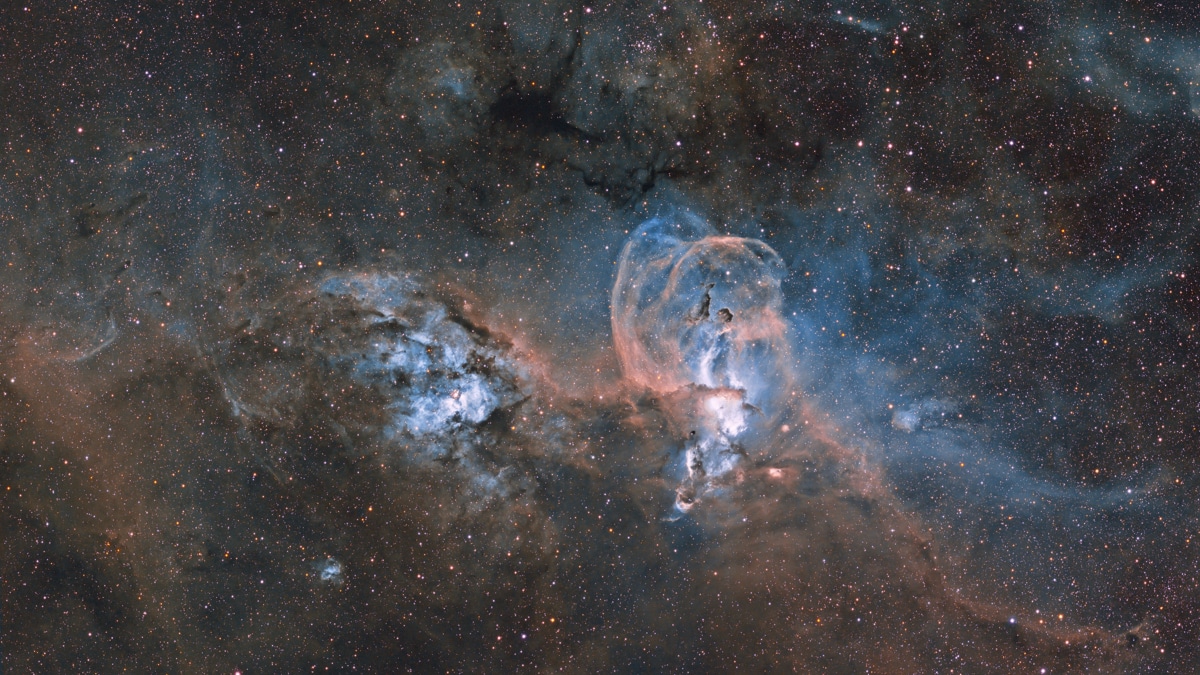
“Statue of Liberty Nebula” by Ignacio Diaz Bobillo (Argentina). Nebulae, Winner.
These are two nebula complexes, far apart from one another. The one on the right, NGC 3576, is closer to Earth, and its shape provides the title of this image. Both are active stellar nurseries, lit and shaped by the radiation from energetic young stars, showcasing a spectacular array of structures and colors. Acquired with narrow band filters, the composite image color scheme follows the three-color Hubble Palette standard.
General Pacheco, Buenos Aires, Argentina, 24 March 2018. Astro-Physics 167 mm apochromatic refractor telescope at f/7.2, Astrodon SII, H-alpha, and OIII 3 nm filters, Astro-Physics 1100GTO mount, Apogee Atlas U16M camera, narrowband, SII-Ha-OIII composite, 16-hour total exposure.
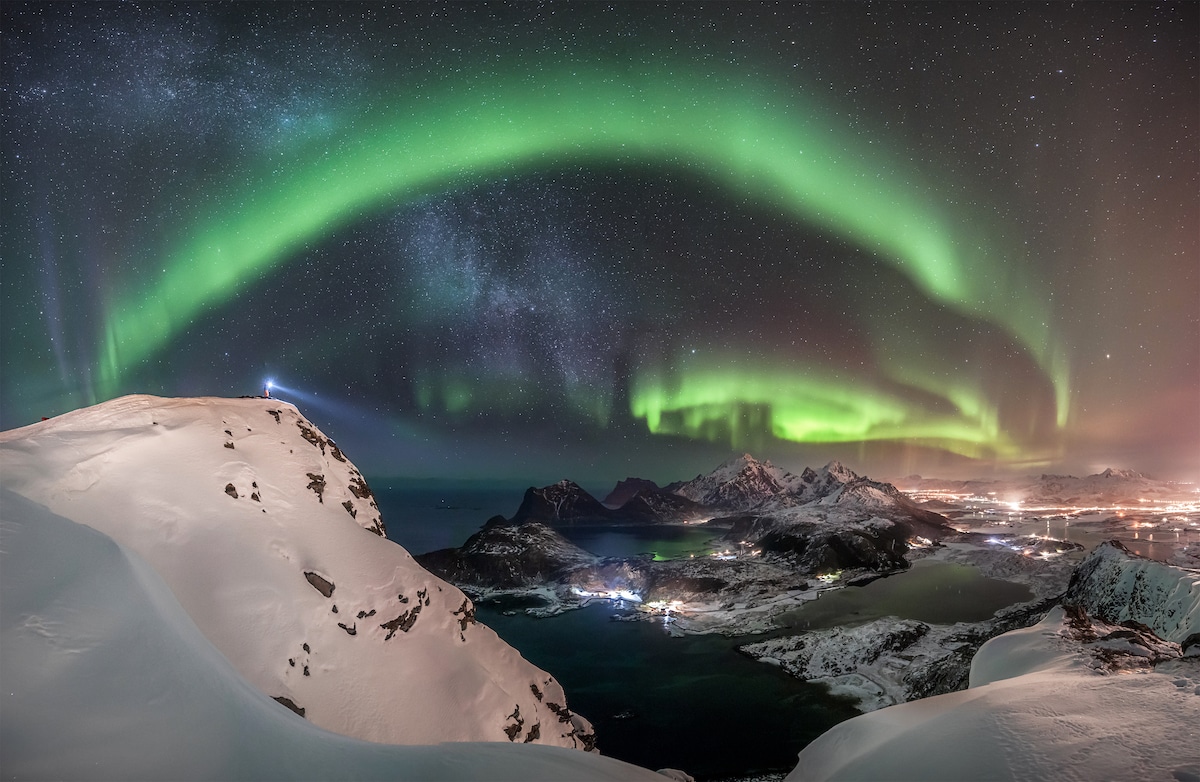
“The Watcher” by Nicolai Brügger (Germany). Aurorae, Winner.
The photographer hiked in the snow to the top of the mountain Offersøykammen in Norway, to witness and capture the breathtaking giant aurora over the Lofoten Islands. He waited many hours and after midnight the bright Northern Lights finally appeared. The photographer shot this as a panorama to showcase the arched aurora over the mountains.
Lofoten, Norway, 9 March 2018. Nikon D600 camera, 15 mm f/2.8 lens, ISO 2000, 12 x 13-second exposures.
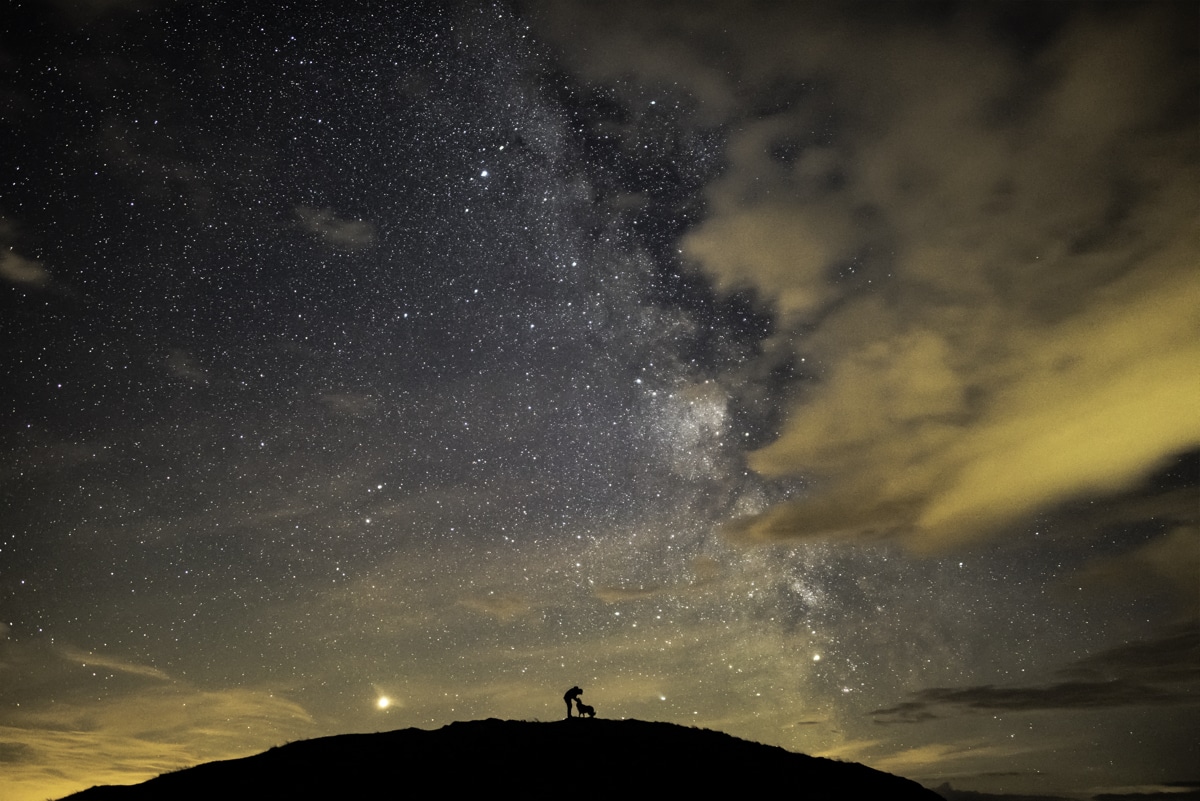
“Ben, Floyd and the Core” by Ben Bush (UK). People and Space, Winner.
The image depicts the photographer and his dog, Floyd, surrounded by Mars, Saturn and the galactic core of the Milky Way galaxy. This photo encapsulates the photographer’s love for the cosmos. As his constant companions, the photographer often tries (and fails) to capture his dogs at night. With this shot, the shutter speed was reduced to 10 seconds to allow to keep Floyd still. To counter this, the ISO was increased and the photographer whispered ‘don't move, don't move, don't move’ to Floyd for the whole 10 seconds. The shot was repeated a number of times in order to capture a clear silhouette in a single exposure shot. The image contains everything the photographer loves about photography; the relationship with the landscape, family, dogs, and friends.
Hadrian’s Wall, Hexham, UK, 9 August 2018
Nikon D810 camera, 24 mm f/1.4 lens, ISO 4000, 10-second exposure.
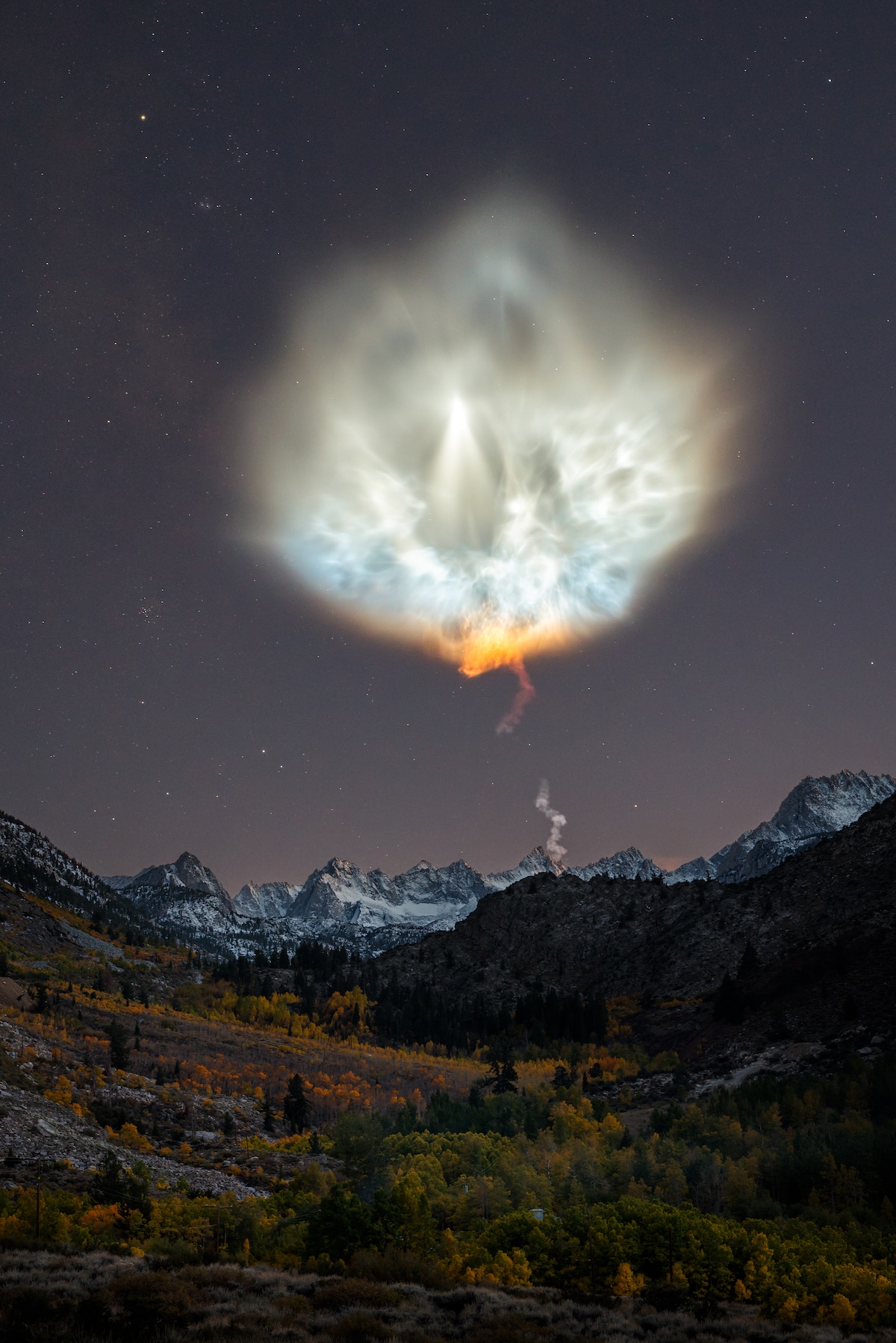
“Flower Power” by Brandon Yoshizawa (USA). Skyscapes, Highly Commended.
The exhaust plume from the Falcon 9 rocket launch took on the shape of a flower during this stage of the launch. This photograph was taken with a 50 mm lens which provided a much closer and detailed view. This shot consists of two exposures blended; one for the foreground and one for the sky, with no movement of the camera in between exposures.
Aspendell, California, USA, 7 October 2018 Nikon D750 camera, 50 mm f/8 lens. Sky: ISO 1600, 5-second exposure. Foreground: ISO 50, 25-second exposure.
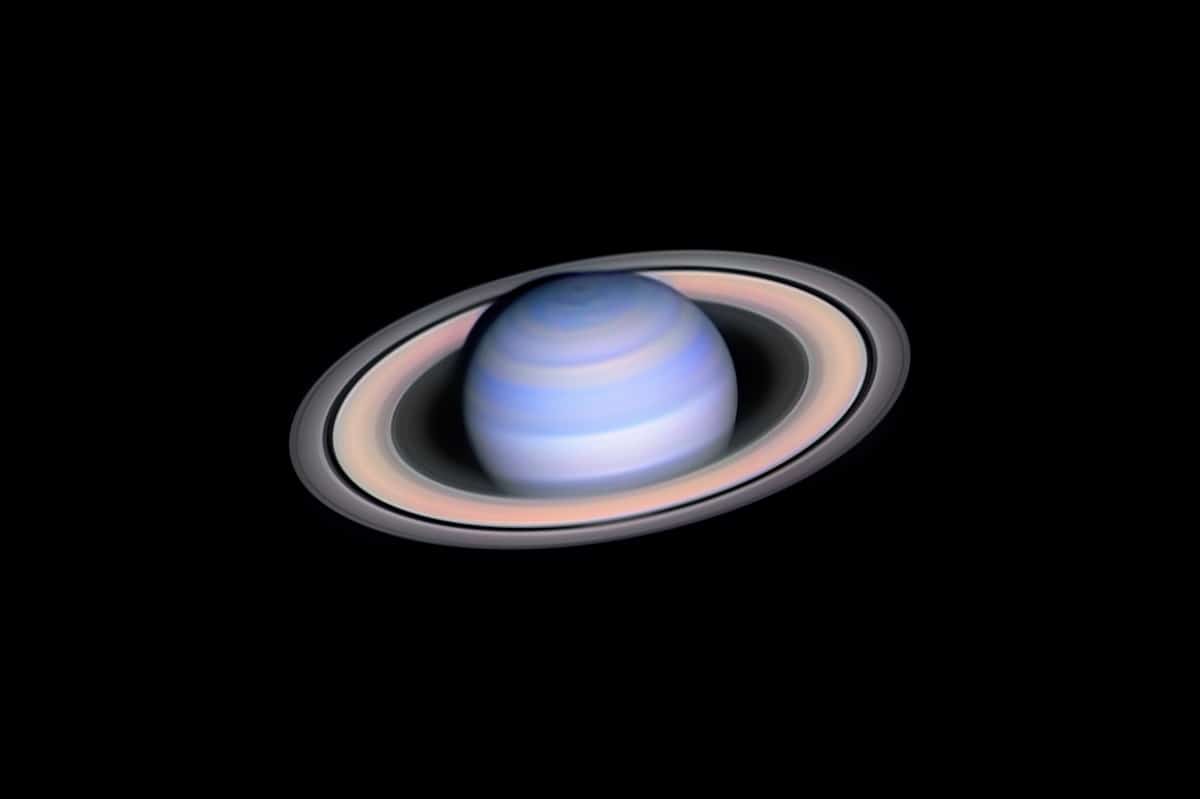
“Infrared Saturn” by László Francsics (Hungary). Robotic Scope, Winner.
With this image, the photographer decided to take on the challenge of revealing the very near infrared colors of Saturn, using the combination of the red and other two infrared planetary filters, the IR 685 and the IR 742, respectively. These are usually taken using special infrared planetary filters, in order to reduce the perturbation effect of the atmosphere, and RGB filters, to show the visual appearance of the planet. This choice of filters meant the photographer could push the limits of amateur astrophotography a little further. In doing so, he managed to shift the spectral range of the colored image with 0.4 microns (620–1150 nm) towards infrared.
Chilescope, Atacama region, Chile, 26 August 2018.
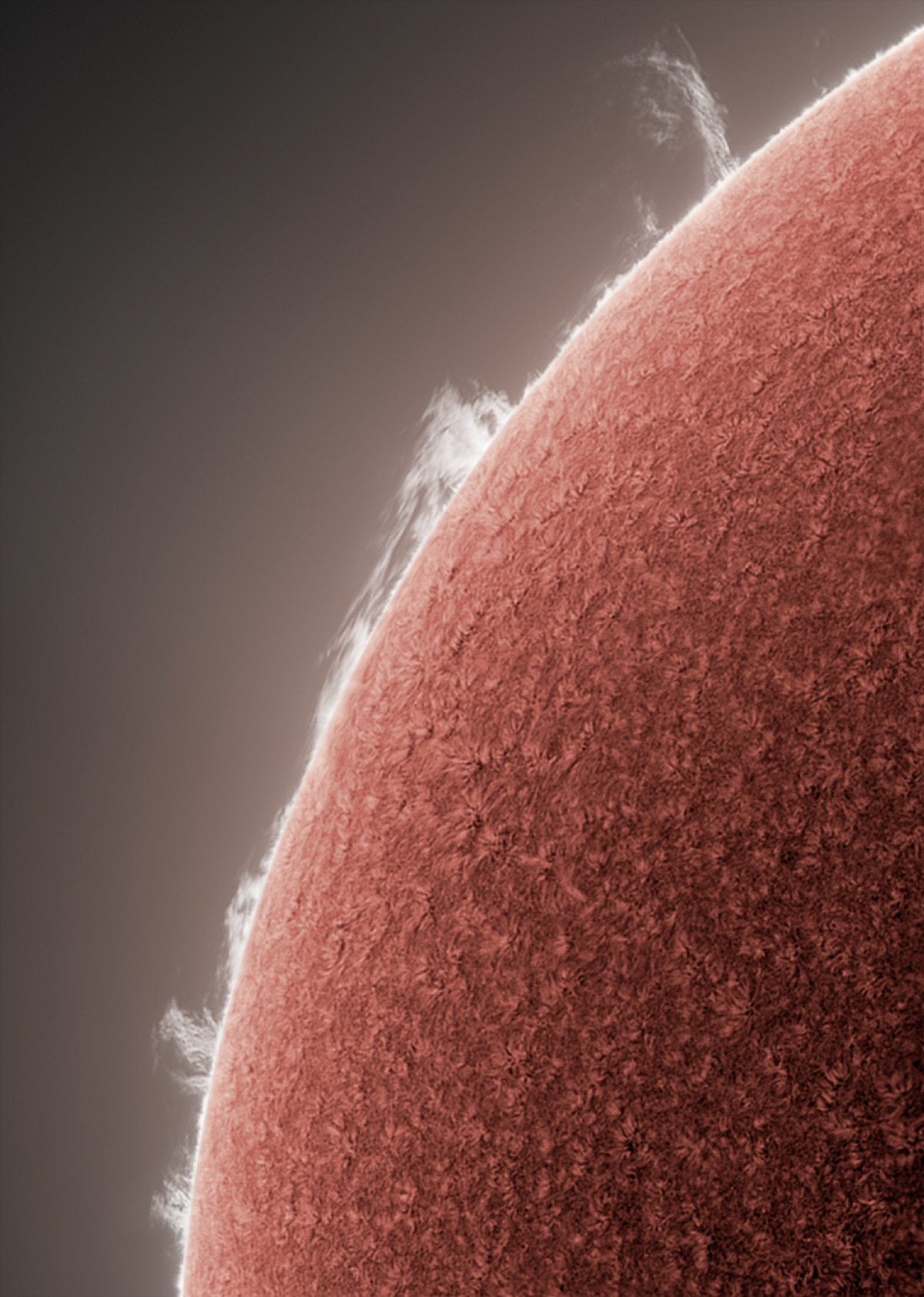
“A Little Fireworks” by Alan Friedman (USA). Our Sun, Winner.
A close-up of the solar limb with what looks like fireworks in the solar minimum period of the Sun’s cycle. A group of prominences are silhouetted against the background of space. The tonality has been inverted to express depth and contrast of the features in the Sun’s chromosphere. The data, captured with a monochrome (black and white) camera, has been colorized.
Buffalo, New York, USA, 29 July 2018
Astro-Physics Stowaway 90 mm apochromatic refractor telescope at f/20, Coronado SolarMax 90 mm etalon filter, Astro-Physics German Equatorial mount, Point Gray Research Grasshopper camera, 33-millisecond exposure.
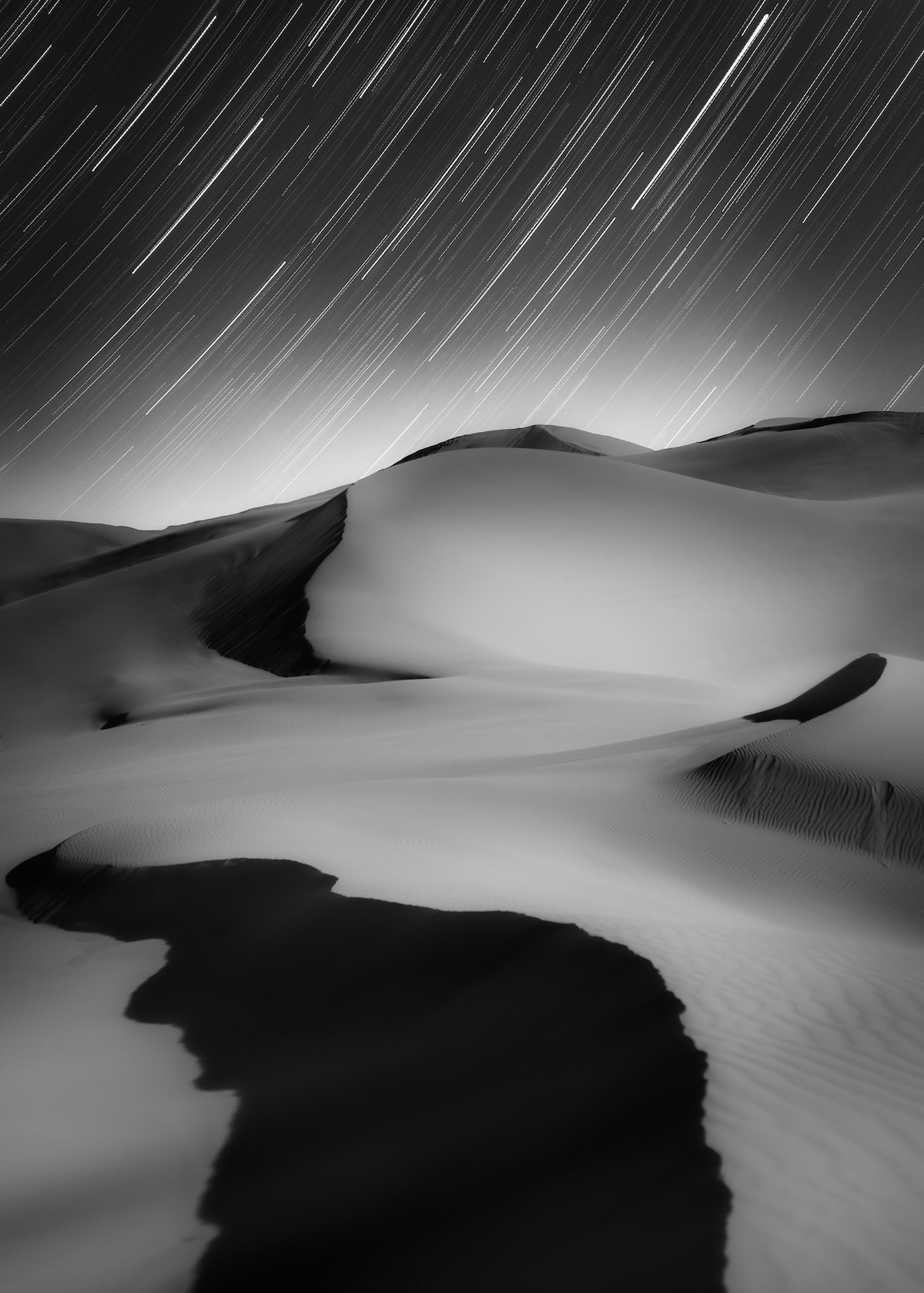
“Sky and Ground, Stars and Sand” by Shuchang Dong (China). Best Newcomer, Joint Winner.
The Moon was shining bright over the sand dunes in north-central China when the photographer decided to capture this image with a friend. After enjoying a sunset and the rise of the Moon, they began to take photos of the magnificent starry sky.
Ningxia, China, 25 July 2018. Canon EOS 5D Mark IV camera, 50 mm f/1.8 lens, ISO 250, 60 x 25-second exposures.
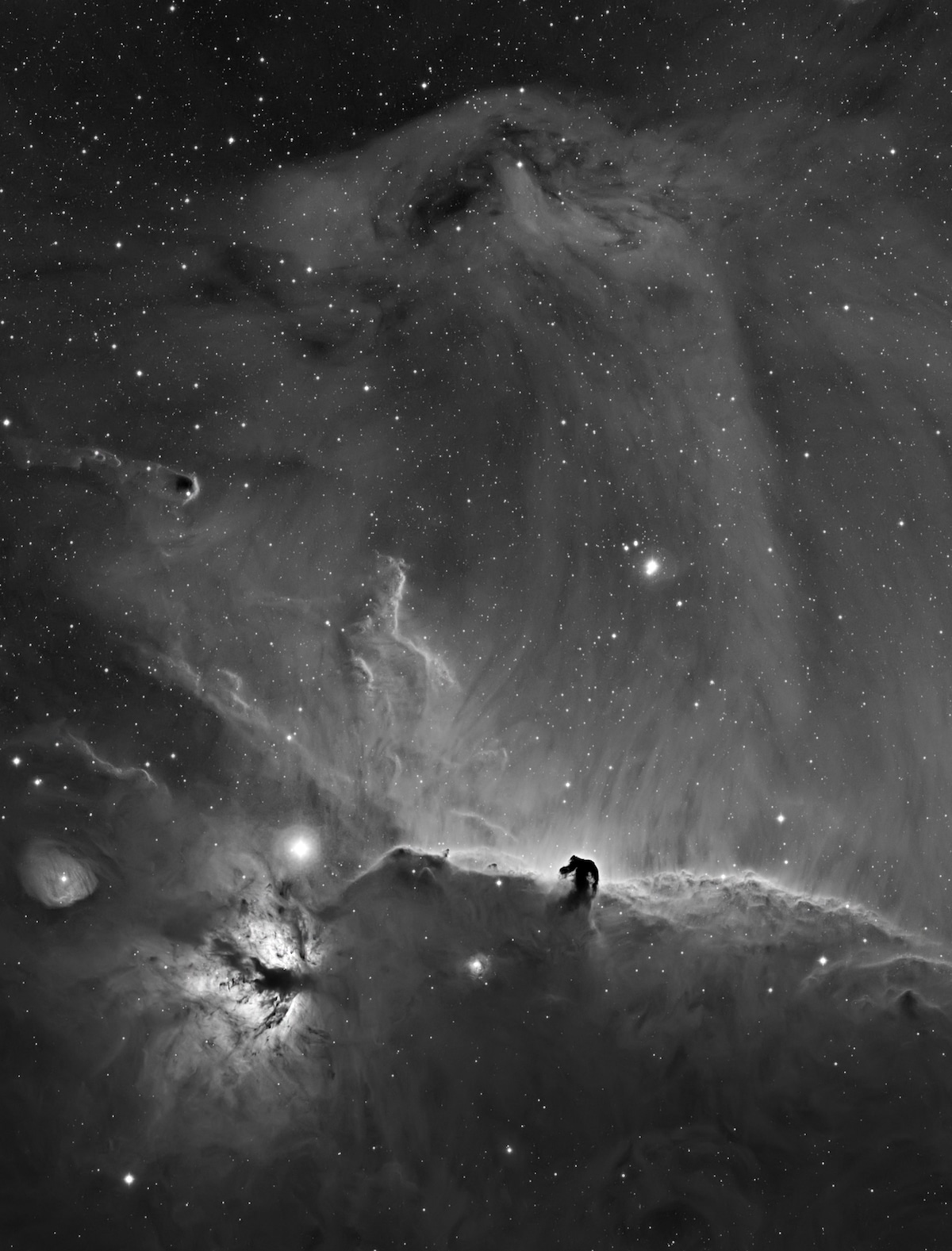
“A Horsehead Curtain Call” by Bob Franke (USA). Nebulae, Runner-up.
The photographer’s main goal is to showcase the dark Horsehead Nebula silhouetted by the background hydrogen curtains. In this two-panel mosaic, the narrowband hydrogen-alpha filter shows both strong and delicate detail with stunning contrast. The Horsehead Nebula (Barnard 33) is very difficult to see, even with very large telescopes. Scottish astronomer, Williamina Fleming discovered the nebula on a photographic plate in 1888. In the lower left-hand corner is the Flame Nebula also known as NGC 2024. The entire complex is part of the Orion Molecular Cloud, at a distance of about 1,500 light-years from Earth.
Chino Valley, Arizona, USA, 12 January 2018
Takahashi FSQ-106ED 106 mm apochromatic refractor telescope at f/5, Paramount MyT mount, SBIG STF-8300M camera, Hydrogen-alpha filter, two-panel mosaic, 16-hour total exposure.











































































